Innovation update May 2017
Innovation update - May 2017
Welcome to the latest issue of our quarterly e-newsletter, Innovation Update. In this issue we talk about the latest developments in our key innovation projects and our vision for the distribution system operator. We hope you find it of interest.
Innovation strategy
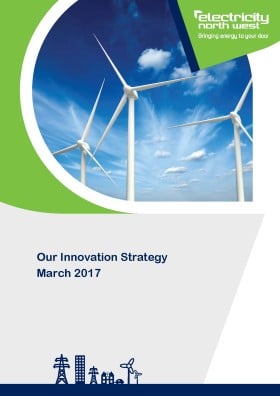
We are leading the way in developing smart solutions to meet the UK’s future energy challenges.
All of our innovation projects are aligned with our innovation strategy – to maximise the use of our existing network, combined with new technology and creative thinking, to provide real solutions to real problems.
The strategy is an integral part of our business plan and describes how we are developing ground-breaking, flexible solutions driven by the changing needs of our customers.
As part of our strategy we have identified a number of key innovation themes which relate to the challenges of a low carbon future and to our business plan. All of our projects are designed to support one or more of these themes to ensure we have a balanced portfolio.
The document was recently updated to include our vision for the distribution system operator, our stakeholder engagement strategy and our new innovation projects.
You can find out more about our innovation strategy, our portfolio of projects and the themes they relate to on our website.
Respond
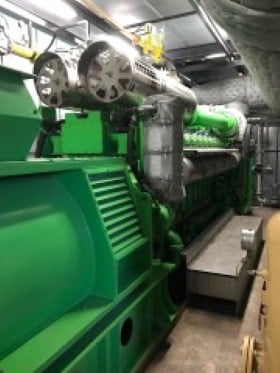
Our low carbon project, Respond, will deliver an intelligent approach to managing fault current – the instantaneous surge of energy which occurs under fault conditions.
Respond is a revolutionary solution to the issue of increasing fault level on the network and will bring significant savings for our customers. The £5.5 million project, which runs from January 2015 until October 2018, will maximise the use of our existing assets, reduce costs to customers and speed up the connection of new demand and generation.
Following the installation of the Respond fault level mitigation equipment, Adaptive Protection and the Is-limiter, there have been four 11kV network faults which resulted in successful operations of the Adaptive Protection technology – three installed at Atherton Town Centre 33/11kV primary substation and one most recently at Blackbull, near Preston.
After a fault event, data is gathered for post-fault analysis. Each successful operation of the technology is validated by our partners WSP Parsons Brinckerhoff and a report is published on the project website three months later. These reports validate the real time operational results against simulated results. This will help with project learning and tuning our network models to ensure that the data is as accurate as possible.
Elsewhere on the project we are very close to agreeing a contract for a ‘Fault Current Limiting service’. This is a commercial fault level mitigation technique which provides an opportunity for demand and generation customers to earn rewards by selling a service to us through a managed service agreement.
When a fault occurs, all sources of generation connected to the electricity network contribute to fault current. Using new technology being trialled as part of the project, the customer’s generation source, in this case a 3.3MW combined heat and power plant, can be turned off instantly for a few minutes so that it no longer contributes to the fault current.
Celsius
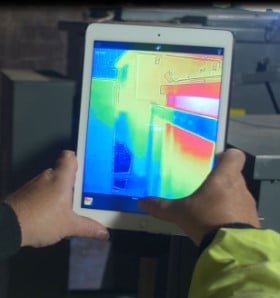
Work to deliver our £5.5 million innovation project Celsius is progressing well, 15 months into the four-year project.
Celsius will deliver a co-ordinated approach to managing the temperature of electrical assets in distribution substations and is the first solution of its kind in Great Britain. The project will release additional capacity, reduce long-term costs for customers and avoid early asset replacement.
The first stage of Celsius is to gather data from 520 substations, using new temperature monitoring equipment. The rollout of monitoring equipment is now in its final stages, with more than 350 of the sites installed and already gathering data. The data is being analysed by our project partner Ricardo to improve our understanding of the relationship between an asset’s temperature, load and environment.
The result of this analysis will lead to the development of a ‘thermal ratings tool’ which will enable us to understand what additional capacity can be released from our substations.
We’re also working with the National Physics Laboratory on a ‘thermal flow study’ to analyse the heat and air flows in substations. This will influence the design of our substations in the future and potentially show how air flow in existing substations can be improved.
The second part of Celsius is to test a range of cooling techniques on 100 of the trial substations. We are now busy researching different cooling techniques which we will trial next year. As the cooling techniques will be deployed at substations close to homes and businesses, we will carry out a programme of engagement to understand any audible or visual impact of the techniques on our customers.
Value of Lost Load

Electricity supply interruptions have financial and social impacts on customers which vary by season, time of day, customer load and customer type. Understanding the value of lost load (VoLL) is important in network planning and investment strategy and will become increasingly significant as customers become more reliant on electricity in the low carbon future.
The VoLL project started in late 2015 and will run until January 2018. It involves a robust programme of engagement with a broad range of domestic customers and small to medium enterprises (SMEs). This research will deliver a greater understanding of VoLL by customer segment. One of the most significant challenges is to understand how VoLL assignment, in specific customer groups, is likely to change in the future.
We have now completed the initial stage of an extensive two-phase customer survey. The second phase will be conducted this summer, ensuring that we capture seasonal variations in VoLL.
The survey included a complex ‘stated preference’ exercise which was identified in a literature review and an independent peer review as being the most robust and reliable technique for measuring VoLL. This exercise involved asking customers to trade off different levels of supply reliability in exchange for receiving hypothetical financial incentives or penalties. A second, similar exercise involved trading a monetary value against various support mechanisms that might mitigate the impact of a power cut.
We are currently analysing survey results from over 3,000 respondents from the first phase of the survey. Early indicators show distinct variations in VoLL across a broad spectrum of consumers.
In total, over 6,000 interviews will be carried out across Great Britain. This guarantees that the results will provide a credible measure of the present VoLL in each customer segment, along with the best possible estimation of how these distinct values could change in the future.
We anticipate that our final analysis will result in a complex VoLL matrix, which is able to demonstrate value assignment by unique customer segment. This revised model will assist DNOs in making key decisions concerning their network investment and customer strategies.
Our vision for the distribution system operator
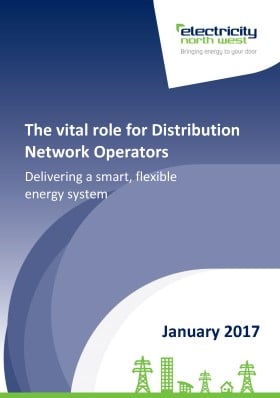
Electricity North West believes that as a result of the impact of a low carbon future we will need to play a much more active role in the energy market, reflecting the new needs and priorities of our customers, and that this will lead to the evolution of distribution network operators (DNOs) into distribution system operators (DSOs).
Historically the role of a DNO like ourselves has been to convey electricity from the transmission network to our customers’ homes and businesses. Ensuring that enough electricity is produced for us to transport to customers has been the responsibility of National Grid.
But the role of networks and energy customers is changing, proven by the rapid rise in community energy groups forming, as well as new technologies allowing local generation and supply.
We’re now seeing customers who want to sell the energy they generate to other local customers. This can be incredibly efficient and should be encouraged. It also shows that networks have a unique role to play as enablers and participants in creating open markets to allow this type of progress to happen and secure future energy needs.
We have proven success in delivering innovation projects that provide real improvements to customers in terms of capacity, cost and choice. The move to the DSO model is an extension of our work so far and our involvement is key to its success for customers.
Discussions are currently taking place within Ofgem and Government on the role of DNOs and the move to a DSO model in which key balancing would take place at a much more local level.
We have set out our vision for the DSO model in a white paper ‘The vital role for Distribution Network Operators: Delivering a smart, flexible energy system’ which makes the case for the evolution of the DNOs to DSO. Such an evolution is essential if the UK is to meet its low carbon targets in a timely, inclusive, cost-efficient and secure way.
Find out more about our DSO vision.
Network Innovation Competition 2017
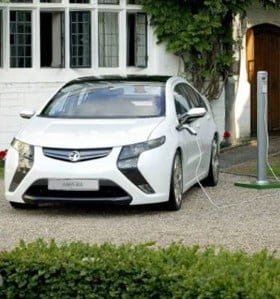
We have recently taken the first steps in our bid for further innovation funding. The initial screening proposal for ‘Power Saver Plus’ has met the eligibility requirements for inclusion in this year’s Network Innovation Competition (NIC).
The NIC is an annual opportunity for electricity network companies to compete for funding for the development and demonstration of new technologies, operating and commercial arrangements. Funding is provided for the best innovation projects which help all network operators understand what they need to do to provide environmental benefits, cost reductions and security of supply as Great Britain moves to a low carbon economy. Up to £70m per annum is available.
Power Saver Plus is an innovative approach to delivering customer-focused energy efficiency. The £11.5 million project will lead to an evaluation tool for DNOs to identify the most effective mix of efficiency measures, designed to reduce network costs, reduce bills for customers and reduce CO2 emissions
The project aims to demonstrate how a DNO-led, targeted energy efficiency programme could deliver superior overall electricity system benefits, including:
- Reduced need for costly and disruptive network reinforcement
- Lower costs of accommodating electric vehicles and heat pumps on local networks
- Reduced overall costs of decarbonisation of heat and demand, and lower national carbon footprint of electricity generation.
The next stage in the bid process is to compile a detailed 50-page application which will be submitted to Ofgem early in August.
If we’re successful the project will run from January 2018 until June 2022 and will trial new approaches to delivering energy efficiency with domestic customers, community energy groups and small businesses connected to the low voltage network.
Events
- Our annual learning event, 5 July 2017 – our first annual learning and dissemination event. The day's agenda includes: an overview of our key projects, our vision for the distribution system operator and an introduction to some of our smaller projects
- CIRED, 12-15 June 2017 – 24th International Conference & Exhibition on Electricity Distribution, includes presentation from Electricity North West on the Architecture of Tools for Load Scenarios (ATLAS) project.
Useful links
You can find out more detailed information about our strategy and all of our innovation projects using the following links:
- Our new innovation strategy published in March 2017: www.enwl.co.uk/innovation-strategy
- Our LCN Fund project Smart Street: www.enwl.co.uk/smartstreet
- Our LCN Fund project Respond: www.enwl.co.uk/respond
- Our NIC project Celsius: www.enwl.co.uk/celsius
- Our NIA project Value of Lost Load: www.enwl.co.uk/voll
- Our other NIA projects: www.enwl.co.uk/nia
- Meet the Electricity North West innovation team: Meet the team
- The Electricity Networks Association smarter networks portal: www.smarternetworks.org
Or contact us at innovation@enwl.co.uk